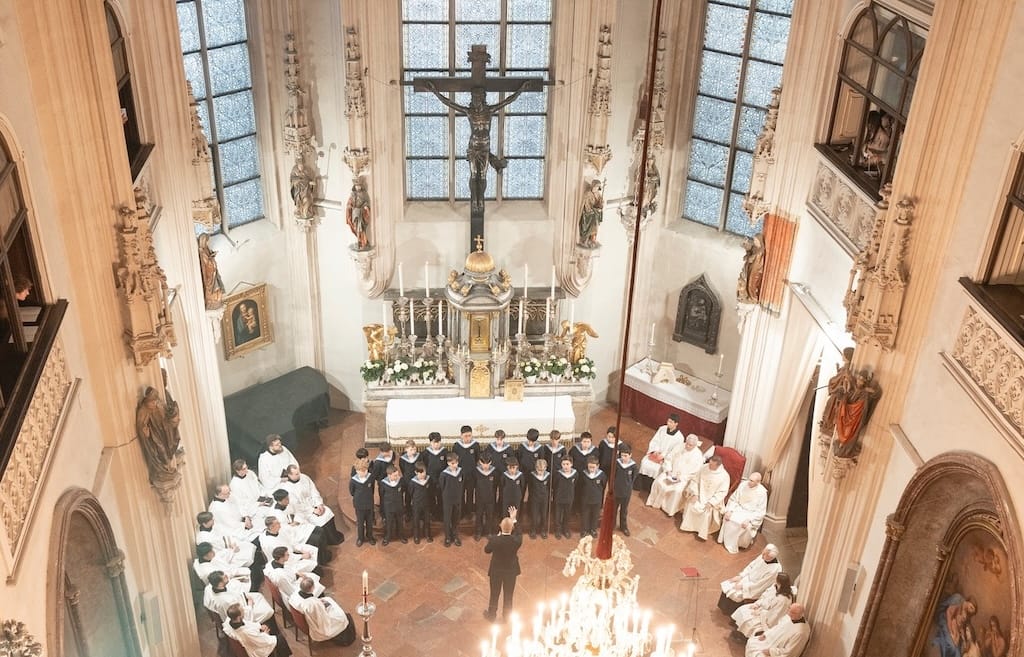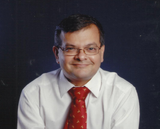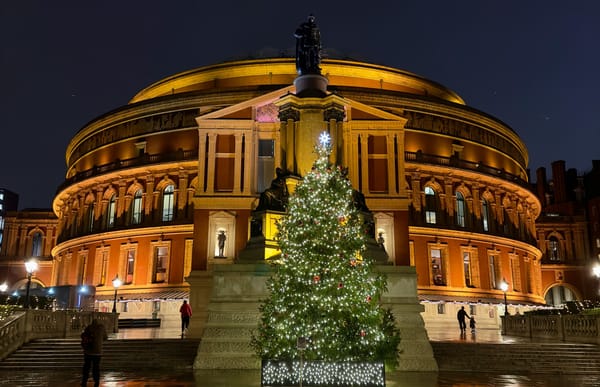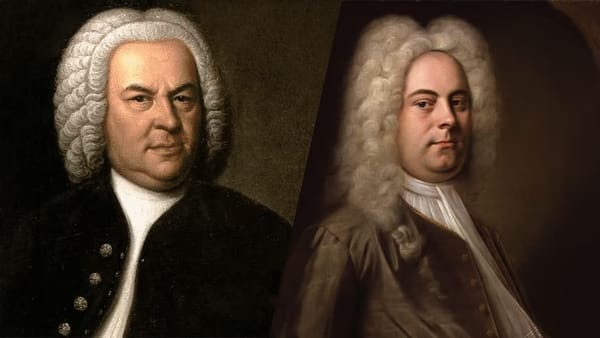Bruckner’s Sacred Sounds: Experiencing His First Mass at Vienna’s Hofburgkapelle
In Vienna’s historic Hofburgkapelle, I attended a stirring Latin Mass featuring Bruckner’s First Mass in D minor, performed by the Vienna Boys’ Choir and elite musicians—a transcendent blend of faith, history, and music.

Classical music was the motivation for my recent trip to Vienna. It was a Sunday (1 June 2025) just a couple of days after we arrived in Vienna, and I wanted to go to a Catholic Sunday service. My first thought was Vienna’s most important religious building, Stefansdom (St. Stephen’s Cathedral, the mother church of the Archdiocese of Vienna). But I had already visited it several times, so I scoured the internet for other services.
There was a 9.15 AM Mass at the Wiener Hofburgkapelle (Vienna Hofburg Chapel), an imperial chapel in the late Romanesque style dating back to 1287. Incorporated into the service would be Anton Bruckner’s First Mass in D minor (WAB 26).
It would be performed by the Vienna Boys’ Choir (VBC, Wiener Sängerknaben), one of the world’s most famous boys’ choirs; along with members of the Vienna State Opera orchestra (from whose ranks the members of the Vienna Philharmonic are chosen) and men’s choir, and the ‘Choralschola der Wiener Hofburgkapelle’ (Schola of the Vienna Hofburg Chapel, made up of former members of the VBC after they hit puberty), with organist Elke Eckerstorfer, and conducted by Martin Schebesta. The VBC also sang the soprano and alto soloist parts, while tenor and bass were sung by Wolfram Igor Derntl and Johannes Gisser respectively.
The Hofburgkapelle is ‘home’ to the VBC for church services and concerts with the participation of the above-mentioned forces. Founded in 1924, the VBC completed a century last year.
I had difficulty finding the Hofburgkapelle early on a Sunday morning, and luckily bumped into a musician also heading there.
I had assumed that the Mass would be in German. On getting there I learned it would be in Latin, but as it turned out, the readings and Gospel were in German, as was the homily with a short summary in English for the tourists’ benefit.
I used to serve Mass as an altar-boy in Don Bosco Panjim, and some senior priests used to celebrate Mass it in Latin in the sacristy in the 1970s. That long-term memory was awakened, and I found I could remember a lot of the congregational responses despite the long hiatus.
Vienna has such a vast wealth of music history in terms of composers that lived there, that there is a pecking order of visibility and representation to the visitor. Mozart seems to be the most ‘marketed’ rivalling even Beethoven.
I was surprised by the relative cluelessness of the average local about the precise location of the residences (two of which have been turned into tribute museums) their city’s most famous poster-boy Beethoven lived in, until I learned that he was such a difficult, fussy tenant that he moved house at least 67 times in the 35 years from 1792 until his death in 1827!
Anton Bruckner (1824 – 1996) is not a hot favourite with the tourists, but he spent the last 28 years of his life in Vienna, from 1868 until his death.
Bruckner’s massive symphonies polarise music lovers, with detractors finding fault with their length, repetitiveness and perceived “uninspired bombast”, while his fans point to their monumental architectural scope and transcendent spirituality.
My personal experience, especially from the time I had access to live performances of Bruckner symphonies in my England years, is that repeated exposure to them is a life-changing investment. Bruckner was a deeply religious man all his life, and to me that comes across even in his symphonies.
I was not at all surprised therefore to read the great musicologist Alfred Einstein (1880-1952) state in his 1947 work ‘Music in the Romantic era’ that “[Bruckner’s] symphonic art . . . sprang from the same source as his church music — from the religious. In the slow movements as well as in the first and last movements, it is always a coming to terms with God . . . The religious element and the feeling for nature converge into the mystical.”
I had however never ever been to a live performance of a Bruckner Mass (he wrote at least seven Masses, two requiems, and sketches for two additional Masses and one requiem), and here I was getting an opportunity to rectify that with the best choral and orchestral forces on the planet, and in the appropriate context as well.
Furthermore, Bruckner himself was court organist in this very chapel from 1878 to 1892. It is not the same instrument, but one gets the impression that he would have loved the sound of the present 2003 model by Orgelbau Kuhn with 27 stops (11 more than the one he played) and a total of 1654 pipes including 92 wooden pipes.
Bruckner’s First Mass (1864) predates his First Symphony (1865-66). Whoever reviewed the first performance of the D minor Mass at the old Linz cathedral on 20 November 1864 for the ‘Linzer Zeitung’ was right on the money when he detected Bruckner’s potential as a symphonic composer and ranked the Mass “in the highest echelon of church music.”
The ascending scale of the Kyrie has been termed a musical “stairway to heaven” (a reference to Jacob’s ladder from the book of Genesis) device, which Bruckner also employs in his Te Deum and in the Adagio movements of several of his symphonies.
Musicologist Leopold Nowak (1904 – 1991), renowned for editing Bruckner’s works, wrote: “Perhaps the best indication of the high regard in which Bruckner held this mass is his use of the ‘miserere’ motif from the Gloria in the Adagio of the Ninth Symphony [which he dedicated “to the beloved God” and whose last movement was left incomplete when he died].. He could think of no more fitting music for his ‘farewell to life’ itself than the humbly pleading six-four chord sequences of his days in Linz.”
I recalled this when listening on internet radio to the Vienna Philharmonic play Bruckner’s Ninth at the BBC Proms on 8 September.
What also elevated the performance of the Mas that June Sunday in Vienna was the unobtrusiveness of the famous choir and musicians, literally out of sight, directly overhead, in the choir loft. This was sacred music as it should be performed, not only in its appropriate liturgical setting, but without the sideshow circus it has degenerated to in some of our sacred spaces. No applause, bows or curtsies followed the Kyrie, Gloria, Credo, Sanctus, Benedictus or Agnus Dei. The celebration of the Eucharist was paramount.
Only after the service did the VBC come out front to sing one brief motet by Mendelssohn (‘Hebe deine augen auf’, Lift up your eyes) and disperse while an organ postlude was played (Bruckner Prelude and Fugue in C minor WAB 131).

Later, I met two VBC singers Christian and Benjamin, still in their attire, at the underground station, and was pleasantly surprised to learn they loved watching German-subtitled Bollywood films, especially Shah Rukh Khan and Hritik Roshan starrers!
They had a busy day ahead as that evening, they would be in the choir at the Musikverein Wien performing Gustav Mahler’s mighty 90 minute-long Eighth Symphony (“Symphony of a Thousand”). Mahler admired Bruckner, whom he called his “forerunner.” It neatly connected the VBC’s morning and evening of music.
This article first appeared in The Navhind Times, Goa, India.





